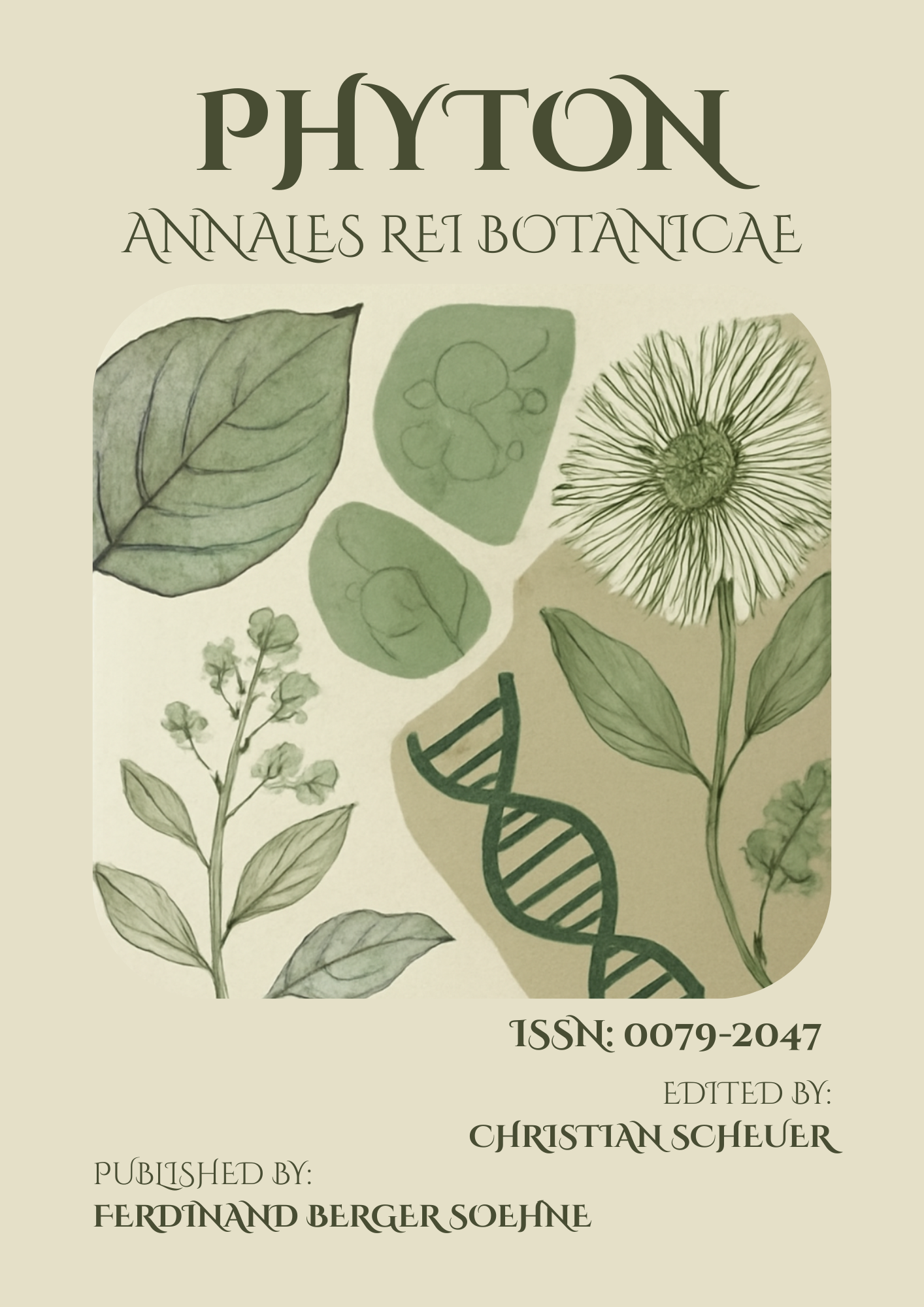Author Guidelines
1. Aim & Scope
Please read & confirm the Aim & Scope section available on the journal’s official website: https://phyton-annales.com
2. Manuscript Categories
√ Original Research Articles – Full reports of novel scientific investigations.
√ Review Articles – Comprehensive analyses of current knowledge.
√ Short Communications – Concise accounts of important results or methods.
√ Technical Notes – New techniques, methods, or instrumentation.
√ Book Reviews – Critical evaluations of recently published works.
3. Manuscript Preparation
General Formatting
√ File format: Microsoft Word (.docx) or LaTeX (with PDF + source files).
√ Font: Cambria, 11 pt, line spacing 1.15.
√ Margins: 2.5 cm on all sides.
√ Number all pages consecutively.
√ Line numbering is recommended.
√ Use SI units consistently.
√ Structure of Research Articles
Title Page
√ Title in English (mandatory; may also appear in manuscript’s language).
√ Full author names, affiliations, and country.
√ ORCID iD of authors (recommended).
√ Corresponding author with email and address.
Abstract (150–250 words)
√ Written in English (mandatory).
√ Concise summary of objectives, methods, results, and conclusions.
Keywords (3–8)
√ In English (mandatory).
√ May also be given in manuscript’s language.
Main Text
√ Introduction – background and objectives.
√ Materials and Methods – details for reproducibility.
√ Results – clear presentation of findings.
√ Discussion – interpretation and comparison with existing knowledge.
√ Conclusion – main contributions and implications.
√ Acknowledgements (if applicable).
References
√ Consistent style required (APA, Harvard, or Vancouver accepted).
√ Include DOI where available.
Examples:
Journal article: Smith J, Müller K. (2022). Plant adaptation in arid zones. Phyton-Annales Rei Botanicae 62(1): 45–58. https://doi.org/xx.xxxx/xxxx
Book: Brown L. (2019). Plant Ecology: Principles and Applications. Springer, Berlin.
4. Language Policy
√ Manuscripts may be written in any language.
√ Title, abstract, and keywords must always be in English (mandatory).
√ Authors are encouraged to also include these in the manuscript’s primary language.
5. Figures and Tables
√ Figures: high resolution (≥300 dpi), formats: TIFF, PNG, JPEG.
√ Vector graphics (EPS, SVG) recommended for line drawings.
√ Tables must be editable, not images.
√ Number and cite figures/tables in order, each with a descriptive caption.
6. Supplementary Material
Authors may submit datasets, large tables, or multimedia files as supplementary material to be published online alongside the article.
7. Data Availability Statement
A mandatory statement must be included, e.g.:
“All data generated or analyzed during this study are included in this article and its supplementary files.”
Or provide repository links (e.g., Dryad, Zenodo, GenBank).
8. Ethical Standards
√ Manuscripts must be original and not under review elsewhere.
√ Plagiarism, duplicate submission, or data manipulation will not be tolerated.
√ Plant collections from protected areas require permits.
√ New taxa must comply with the International Code of Nomenclature (ICN).
√ For sequence-based studies, accession numbers must be provided (e.g., GenBank).
9. Authorship and Contributions
√ Authorship should reflect substantial contributions.
√ An Author Contributions Statement must be included (e.g., “A.B. designed the study; C.D. performed experiments; E.F. analyzed data; A.B. and C.D. wrote the manuscript.”).
√ All authors must approve the submitted version.
10. Conflict of Interest Statement
√ Authors must declare conflicts of interest. If none:
√ “The authors declare no conflict of interest.”
11. Funding Statement
Funding sources must be clearly identified. Grant numbers should be included where applicable.
12. Peer Review
√ All submissions undergo double-blind peer review by at least two expert referees.
√ The editorial team may request revisions.
√ The final decision rests with the Editor-in-Chief.
13. Copyright and Licensing
√ Copyright remains with the journal.
√ Articles are published under the Creative Commons Attribution-NonCommercial-ShareAlike 4.0 International License (CC BY-NC-SA 4.0).
√ This allows non-commercial sharing and adaptation with attribution, under the same license.
14. Submission Process
√ Preferred submission: Online via the journal’s submission portal on https://phyton-annales.com
√ Secondary option: Submission by email to editor@phyton-annales.com
Each submission must include:
√ Cover letter (confirming originality and authorship approval).
√ Manuscript file.
√ Figures and supplementary materials.
15. Contact Information
Editorial Office
PHYTON – ANNALES REI BOTANICAE
Email: editor@phyton-annales.com
Website: https://phyton-annales.com


